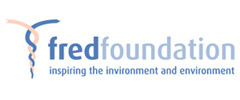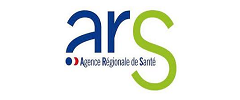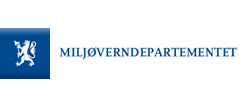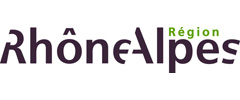International Women's Day 2016: Women call for better protection from hazardous chemicals worldwide
WECF releases “Women and Chemicals” publication and calls for more political action for better health protection from harmful chemicals
07.03.2016 |

In our modern societies, women and men are all continually exposed to hazardous chemicals in their every day lives. But women are often differently exposed due to their (entrenched) gender roles and because of biological susceptibilities and health impacts. WECF, an international network of civil society organisations working for a healthy environment and gender-just society in over 50 countries, presents therefore at International Women’s Day 2016 a deeper look at the nexus between gender roles and women’s exposure to hazardous chemicals worldwide with its publication of “Women and Chemicals“.
In this publication WECF looks at the impacts of e.g. highly hazardous pesticides, mercury, and endocrine disrupting chemicals on women’s health. Women and Chemicals was developed with support and expertise from the United Nations, civil society and scientific institutes. The views expressed in the publication are WECF’s.

Hazardous chemicals can be found in the air we breathe, in the food we eat, in the water we drink. People are largely unaware of this daily chemical exposure. The negative impact of these chemicals affects the environment and human health and can cause a number of lifelong and irreversible diseases and chronic ailments.
The World Health Organisation has established links between hazardous chemicals and the increased risk of breast cancer. It estimates that around 1.7 million women will be diagnosed with breast cancer in 2020.
Women are exposed to a range of hazardous chemicals at home and at work. The publication looks at specific cases in all parts of the world such as women as pesticide sprayers, waste pickers, house cleaners, employed in the plastics industry etc., and as consumers of products which contain toxins. It analyses the issues from an intersectional perspective, and recognises that different regions have to deal with different problems. Exposure to toxic chemicals can lead to serious health effects, such as (breast) cancer, diabetes or infertility.
Corinne Lepage, Former French environment minister and chair of the WECF Board of Trustees, says: “I am worried especially about hormone disrupting chemicals. Although we know about the threat to environment and human health, the EU Commission so far has not been able to regulate EDCs. In particular women and men who are planning to have children, need to be better protected from and informed about EDCs. This report is a good starting point to show the linkage between chemical exposure of women and increasing rates of diseases and that political action is needed now.”
Alexander Nies, SAICM President, welcomes the publication Women and Chemicals. “SAICM is the ideal multi-stakeholder process to address cross-cutting issues like women and chemicals. SAICM emerging issues and projects such as Chemicals in Products, Endocrine Disrupting Chemicals (EDCs) and Highly Hazardous Pesticides address the protection of vulnerable groups, such as women. Now we need to bring the projects into practice.”
Some substances such as endocrine disrupting chemicals can also have negative impacts on very young children. This was also affirmed by statements in 2015 from the International Federation of Gynaecology and Obstetrics (FIGO) and the Endocrine Society. FIGO, who pointed out that “exposure to toxic environmental chemicals during pregnancy is ubiquitous and is a threat to healthy human reproduction (….) while babies are born ‘pre-polluted.’” FIGO and the Endocrine Society both urged political action has to be taken.
Alexandra Caterbow, WECF concludes, “in this report we focused on women, because often men’s health impacts are already better known, from reduced sperm-counts to testicular cancer and genital malformations.4 We call on urgent legislative measures to better protect the health of women, men and children from hazardous chemicals. Immediate steps have to be taken to end use of highly hazardous pesticides, to phase out EDCs such as Bisphenol A from consumer products and packaging, to ban mercury use in artisanal small gold mining, and to promote the use of safer substitutes and non-chemical alternatives”
To celebrate the launch of this publication, WECF will be hosting an Ask Me Anything (AMA) on Reddit where we will invite the general public to ask us questions on the findings of the report.
CONTACT:
WECF International, Alexandra Caterbow: +49 179 5244994 or alexandra.caterbow@wecf.eu
For further press inquiries regarding WECF work on chemicals and health, please contact: Chantal Van den Bossche, +31 6 28129992
NOTES
1) Many non-communicable diseases have been linked to harmful chemicals. NCDs cause 60 per cent of all deaths worldwide. According to WHO Global report, 18 million women died from NCDs alone in 2005. NCDs, such as breast cancer and diabetes, are already the biggest global threat to women’s health today – and they are on the rise. WHO estimates that around 1.7 million women will be diagnosed with breast cancer in 2020. This is an increase by 26 per cent from current levels and cannot only be explained with genetic or other individual dispositions. The impact of environmental risks and the increased exposure to hazardous chemicals all over the world is a big risk factor to all women.
2) EDCs – Endocrine Disrupting Chemicals are chemicals which can interfere with natural hormones; the chemical messengers of our bodies. The most comprehensive report about EDCs and their health effects was published by WHO “State of the Science of Endocrine Disrupting Chemicals 2012” (download: http://www.who.int/ceh/publications/endocrine/en/) It also includes many scientific studies about health impacts on men and boys.
3) HHPs – Highly Hazardous Pesticides are defined by Pesticides Action Network as those that have high potential to cause illness, injury or death to humans and animals or damage to the environment. These include pesticides that are acutely toxic or for which there is evidence of carcinogenicity, mutagenicity, reproductive toxicity, immunotoxicity, endocrine disruption, neurological or developmental toxicity. Generally, highly hazardous pesticides (HHPs) are in widespread use in unsafe conditions, and there are many glaring breaches of the International Code of Conduct on the Distribution and Use of Pesticides occurring on a regular, ongoing basis – 23 years after its adoption as the FAO Code. (See more at: http://www.panap.net/en/p/page/pesticides-campaigns-hhps/185#sthash.vWH4f4Ci.dpuf) Up to now, 509 organisations in 106 countries signed an appeal demanding the ban of HHPs (more information here: http://www.pan-germany.org/gbr/project_work/highly_hazardous_pesticides.html).
4) Further background information: the report Women and Chemicals aims to summarize existing information and initiatives on the topic of women and chemicals. It is a thought-starter and was developed subsequent to an expert workshop held at UNEP´s offices in Geneva. The workshop brought together leading global experts on chemicals and health. It was decided to focus on the particular impacts from exposure to hazardous chemicals, taking into account biological and socio-economic aspects, of women´s lives.
WECF is an international network of 150 women and environmental organizations acting together with women to build a world which is fair, healthy and sustainable. WECF elaborates and implements training and awareness raising programmes on the potential health effects of environmental contaminants on human health, especially the most vulnerable populations. WECF has created the Nesting project www.projectnesting.org. WECF carries out policy and advocacy activities and is official partner of UNEP (United Nations Environment Programme).
Related News
Getting to the Future We Want
4-7 November, Brussels: European Environmental Bureau’s (EEB) Annual Conference
12.11.2018
Human Biomonitoring for Europe
Vienna, 26 September: stakeholder forum
28.09.2018
A life without plastic, wouldn't it be fantastic?!
Interview with Charlotte Schueler of @PlastikfreiLeben, who lives a zerowaste life in Munich, Germany and shares her experiences to her 25.2 thousand followers on instagram & 37.2 thousand followers on facebook
14.09.2018
Calling for periods free from plastic & hazardous chemicals
Letter to Frédérique Ries, MEP, European Parliament on behalf of the #BreakFreeFromPlastics movement
04.09.2018






































